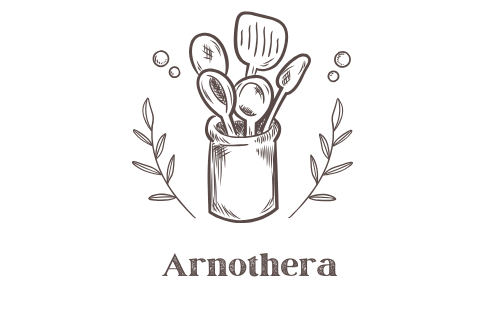
Retirement marks a pivotal transition in life—one that requires careful financial planning to ensure long-term stability and independence. While it presents the chance to step back from professional obligations and focus on personal goals, achieving a secure and fulfilling retirement depends heavily on how well you’ve prepared financially.
Proactive planning is essential to safeguard your future, maintain peace of mind, and support the standard of living you envision. In this article, we offer a comprehensive guide to help you effectively prepare your finances for retirement.
Start Early:
The key to a successful retirement plan is to start early. The power of compounding allows your investments to grow significantly over time. Begin by setting retirement goals, estimating your future financial needs, and establishing a budget. Start saving and investing as soon as possible to take advantage of the long-term growth potential.
Determine Your Retirement Needs:
To prepare financially, you need to estimate your retirement expenses. Consider factors such as housing, healthcare, travel, hobbies, and daily living costs. It’s essential to account for inflation and anticipate rising healthcare expenses. An accurate assessment will help you set a target savings amount.
Create a Retirement Budget:
Developing a retirement budget is crucial to manage your income and expenses during retirement. Start by tracking your current spending habits to get a clear picture of your monthly outflows. Consider adjustments for post-retirement expenses and account for changes in income sources, such as pension, Social Security, or investment returns. Ensure your budget aligns with your desired retirement lifestyle.
Maximize Retirement Savings Accounts:
Take advantage of retirement savings accounts, such as 401(k)s, IRAs, or similar vehicles available in your country. Contribute the maximum amount possible, especially if your employer offers matching contributions. These accounts provide tax advantages and can significantly boost your retirement savings over time.
Diversify Your Investment Portfolio:
A well-diversified investment portfolio is crucial to manage risk and maximize returns. Consider a balanced mix of stocks, bonds, mutual funds, and other investment vehicles based on your risk tolerance and time horizon. As you approach retirement, gradually shift your portfolio towards more conservative investments to protect your savings from market volatility.
The Role of a Gold IRA in a Diversified Portfolio
As individuals plan for retirement, one crucial consideration is building a balanced portfolio that can withstand market volatility and preserve wealth. While traditional retirement accounts like 401(k)s and IRAs are common, diversification is key to mitigating risk. In this blog post, we’ll explore the concept of a Gold Individual Retirement Account (IRA) and explain how it can contribute to a well-rounded retirement portfolio. You can also learn more by reading this American Hartford Gold review.
Understanding a Gold IRA:
A Gold IRA is a self-directed individual retirement account that allows you to invest in physical gold, silver, platinum, or palladium coins or bars approved by the Internal Revenue Service (IRS). Unlike traditional IRAs that typically hold paper assets such as stocks and bonds, a Gold IRA provides exposure to tangible assets, offering potential diversification and a hedge against economic uncertainties.
Diversification Benefits:
Including a Gold IRA in your retirement portfolio can provide diversification benefits, which can help protect your wealth during market downturns. Gold has historically exhibited a low correlation with traditional asset classes, such as stocks and bonds. During periods of economic uncertainty or stock market volatility, gold often acts as a safe-haven asset, potentially offering stability and acting as a counterbalance to other investments.
3. Hedge against Inflation:
Gold has long been considered a hedge against inflation. Inflation erodes the purchasing power of fiat currencies over time. As the cost of goods and services rises, the value of gold, being a tangible asset, tends to increase. By adding gold to your retirement portfolio, you can potentially offset the impact of inflation and preserve your purchasing power in the long run.
4. Preserving Wealth during Financial Crises:
Gold has a history of retaining its value during financial crises. When stock markets experience severe downturns or economic systems face significant challenges, investors often flock to gold as a store of value. Its physical nature and scarcity contribute to its perceived stability during times of uncertainty. By including gold in your retirement portfolio, you may mitigate potential losses during turbulent market conditions.
5. Long-Term Growth Potential:
While gold is often associated with wealth preservation, it can also offer long-term growth potential. Over the past several decades, gold has demonstrated the ability to appreciate in value. Although past performance is not indicative of future results, the limited supply of gold and increasing global demand can contribute to its long-term growth prospects.
6. Risks and Considerations:
It’s important to acknowledge that, like any investment, gold carries its own set of risks. Gold prices can be volatile, and short-term fluctuations are common. Additionally, storing physical gold securely may require additional costs. It’s crucial to research and understand the risks associated with investing in gold before including it in your retirement portfolio. Consider consulting with a financial advisor or a reputable gold IRA custodian to gain insights and make informed decisions.
7. Choosing a Gold IRA Custodian:
To establish a Gold IRA, you’ll need to work with a specialized custodian who facilitates the purchase, storage, and administration of the physical precious metals within the IRA. Selecting a reputable and trustworthy custodian is crucial to ensure compliance with IRS regulations and secure storage of your assets. Conduct thorough research, read reviews, and compare custodial fees and services before making a decision.
8. Balancing Your Retirement Portfolio:
A Gold IRA is not meant to replace traditional retirement accounts but rather to complement them. Consider your risk tolerance, time horizon, and overall retirement goals when determining the allocation of assets within your portfolio. A well-diversified retirement portfolio may include a mix of stocks, bonds, real estate, and precious metals like gold. Regularly review and rebalance your portfolio to maintain your desired asset allocation.
Including a Gold IRA as part of a balanced retirement portfolio can provide diversification, act as a hedge against inflation, and potentially protect wealth during financial crises. Gold’s historical track record and unique properties make it an appealing asset for many investors seeking stability and long-term growth potential. However, it’s crucial to conduct thorough research, assess the risks, and seek professional advice before making investment decisions. By carefully considering the role of a Gold IRA and its potential benefits, you can enhance your retirement strategy and work towards achieving your financial goals.
Eliminate Debt:
Reducing or eliminating debt before retirement is vital for financial security. Prioritize paying off high-interest debts, such as credit cards or personal loans. Being debt-free reduces your monthly expenses, lowers financial stress, and allows you to allocate more resources towards your retirement savings.
Consider Long-Term Care Insurance:
Long-term care can be a significant expense during retirement. Evaluate the need for long-term care insurance to protect your assets and mitigate the financial burden of healthcare costs in the future. Research various policies, understand their coverage, and consider factors such as your health, family history, and personal circumstances.
Review and Update Estate Planning Documents:
Ensure your estate planning documents, including your will, power of attorney, and healthcare proxy, are up to date. Consult with an estate planning attorney to review beneficiary designations, establish trusts, and explore strategies to minimize estate taxes. Taking care of these important matters now will provide peace of mind and protect your assets.
Seek Professional Financial Advice:
Consider consulting a certified financial planner or retirement specialist to ensure your retirement plan aligns with your goals and risk tolerance. A financial professional can provide valuable guidance, assist with investment decisions, and help you stay on track towards your retirement objectives.
Continually Monitor and Adjust Your Plan:
Retirement planning is an ongoing process. Regularly review your financial situation, assess the performance of your investments, and adjust your plan as needed. Life circumstances, economic conditions, and personal goals may change over time, necessitating modifications to your retirement strategy.
Preparing your finances for retirement is a journey that requires careful planning and consistent effort. Starting early, estimating your retirement needs, creating a budget, maximizing retirement savings accounts, diversifying investments, and managing debt are essential steps. Additionally, considering long-term care insurance, updating estate planning documents, seeking professional advice, and regularly monitoring your plan will ensure you’re well-prepared for a comfortable and fulfilling retirement. Remember, a proactive approach today will help you secure a prosperous and worry-free future.
